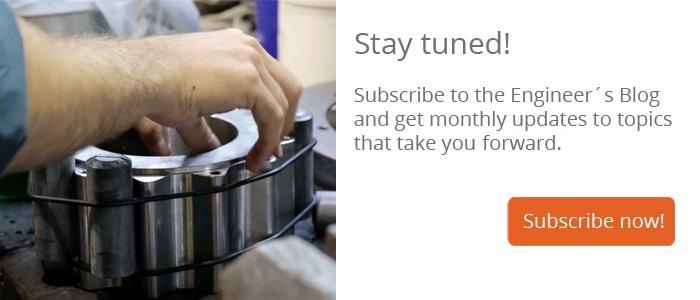Catching you up on market news – Augmented & virtual reality and 3D printing: how to make the inconceivable tangible

3D printing meanwhile offers outrageous possibilities also for mechanical engineering; some highlights have been presented at the formnext 2016. This technology used to be considered as expensive, limited and quite slow, but the rapid development in this field led to innovative and flexible systems for production. Other news we have been really enthusiastic about are further developed augmented or virtual reality systems which can improve processes in manufacturing industries.
The formnext attracts specialists and industries by presenting the “next generation of intelligent production”. And indeed there have been several innovations to marvel at. Despite impressive solutions based on additive manufacturing for the aerospace sector, the progress in the field of materials was definitely a highlight.
A special section showed that even though the number of usable materials is still limited, the combination of different textures can offer completely new opportunities. It is also possible to produce complex geometries that have not been realizable with previously existing technologies. This is also applicable for everyday use as, for example, creating running shoes which are perfectly customized to fit the respective foot type.
There are (almost) no limits when it comes to colors or textures of the materials used for additive manufacturing and specific requirements can be met. The range covers UV resistant, food-safe, high-strength and temperature resistant materials. Aside from polymers or metals even wood pellets can be used.
By using a water-soluble material it is possible to produce complete components consisting of several parts. Arburg has introduced this technology with the “freeformer”: a product can be built with supporting structures made of a special polyamid which can be removed in hot water. The parts can then be used as prototypes or for testing.
3D printing for serial production
In addition to the progress of increasing the number of materials for additive manufacturing, the 3D printer itself is designed much more efficient nowadays. An excellent example is presented by Cincinnati Inc. and NVBOTS: during this year’s FabTech 2016 in Las Vegas they have introduced the “SAAM”. SAAM stands for Small Area Additive Manufacturing which is already indicating that the printer is fulfilling the demands while it is built much more compact compared to the predecessors. This enables a flexible production and can be perfectly used for producing prototypes.
Because even though suppliers of 3D printers are meanwhile able to provide solutions for serial production for the aerospace sector or medical technologies, there is still potential with regard to efficient mass production in mechanical engineering. This is mainly due to the time it takes to produce such parts.
Opinions vary among experts: some doubt that additive manufacturing will replace conventional production, but expect it to serve as an option to produce complex and customized products much easier. Others are convinced that the idea of fully automated manufacturing is becoming tangible with this technology. This is also creating new challenges for development teams since applicable software is the key factor for success for creating such complex products.
The increase in visitors at the formnext of almost 50% compared to last year indicates that the interest has grown massively. This is also reflected by the market development – according to a new study by Roland Berger additive manufacturing is growing by an average of 20% per year since 2004 and growth rates for the next years are expected to be even higher.
New suppliers and the increasing competitive pressure will probably lead to a more moderate price level for 3D printers, which will also trigger smaller manufacturing companies to get on board. We are eager to see what will be next. If you are curious now have a look at the video of this year’s formnext and some impressions.
Appearance or reality that is the question…
Hand in hand with the idea of fully automated manufacturing goes the concept of augmented and virtual reality. We found innovative and interesting examples where this new technology really makes a difference. Even though “virtual reality” lets you probably think of games consoles or Pokémon Go, it is remarkable how easy this idea can be transferred to several fields of applications in the working life and manufacturing industries.
For example, service technicians would have an easier job with maintenance and repair being equipped with an augmented reality device. A “virtual manual” could show each individual work step and upcoming questions could be answered directly by connecting with an expert, since it would be possible to see the problem through the eyes of the technician.
The IT service provider Bechtle is already using data glasses with a scanning function and integrated speech / voice recognition to optimize logistic processes. With these smart glasses and a digital warehouse management system, the vision of “hands-free picking” became reality. Relevant information appears in the field of view of the worker and all necessary steps during the picking process can be followed up. An effective dual control principle is the desired result.
Another example, which is in our opinion very innovative, is the Augmented Arc by Miller Electric Manufacturing Co. As leading supplier for arc welding the team developed an augmented reality system which is simulating welding processes by overlaying digital pictures in the environment of the user. This is why even trainees without any particular knowledge can directly start to work with it and they will receive a feedback on their work immediately.
Carrying out a training which requires a lot of practice will therefore bind fewer resources and save material cost. The camera and the sensor integrated in the specially designed helmet are sending data to a computer. The received information is processed and a simulation which appears completely realistic is created.
Especially for the transfer of knowledge or to connect global teams augmented and virtual reality systems can be helpful. Not only to save costs or for efficient processes but also to make working and learning much easier and intuitive. For sure, there will be new fields and applications for this technology and we will keep you updated.
Glossary
Additive Manufacturing: also known as rapid prototyping or generative manufacturing, describes automated processes to manufacture three-dimensional products based on 3D-CAD data sets. The finished products are built by adding layer-upon-layer of a specific material or even different textures. The range of usable materials includes polymers, metals, ceramics and cellulose.
Virtual Reality: is the simulation of a computer-generated three-dimensional environment with the goal to create a different reality that the user accepts as real environment. Smart glasses, headsets or helmets equipped with sensors allow the user to interact with the virtual surrounding. Applications for VR technologies are training programs, aerospace, research and development, medical technologies and architecture.
Augmented Reality: means the integration of digital information with the environment of the user in real time. Unlike virtual reality, which creates a totally artificial environment, augmented reality uses the existing environment and overlays new information on top of it. Possible applications among others are research and development, flight or driving simulation and marketing.


Comment